
Tesla Cybercab to debut in 2026
The event at Warners Bros studios started almost an hour late, allegedly due to a medical emergency in the audience. When Tesla CEO Elon Musk pulled up in a driverless Cybercab without a steering wheel, there was great astonishment – mainly due to the vehicle’s appearance. After all, no authorisation was required to drive a car without a steering wheel on private property. As the film studio is modelled on a real environment, Musk could still demonstrate the capabilities of the autonomous driving system.
The Cybercab is an aerodynamically shaped coupé with gullwing doors – critics see a certain resemblance to the VW XL1. The Cybercab does prove that the basic rules of aerodynamics are the same for everyone.
If a car is to be aerodynamic, there is no way around this particular shape. The stainless steel body (here with a touch of gold) and continuous light strip at the front are reminiscent of the Cybertruck, even if – for aerodynamic reasons – the car is not as sharp-edged as the pickup.
Tesla is still keeping quiet about the Cybercab’s platform and drive technology for the premiere – there is currently no detailed information on the Tesla website either. However, Musk has announced that private customers will be able to buy the self-driving car for less than 30,000 dollars – a price limit many car manufacturers fail to achieve with significantly more conventional electric cars. Even the cheapest Tesla currently costs over 40,000 dollars in the US after the carmaker took the Model 3 with the small LFP battery off the market (due to the tariffs on the battery imported from China).















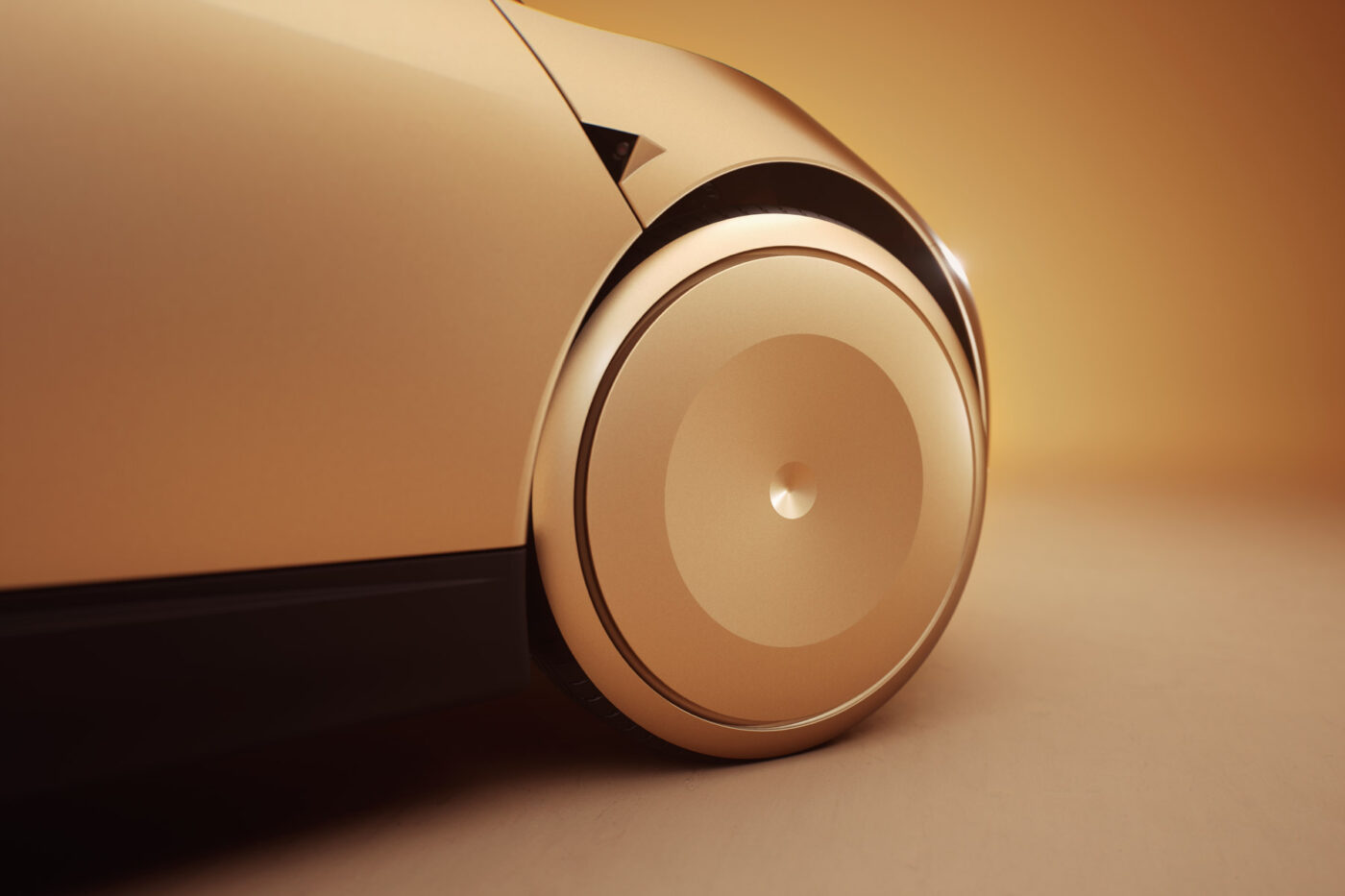

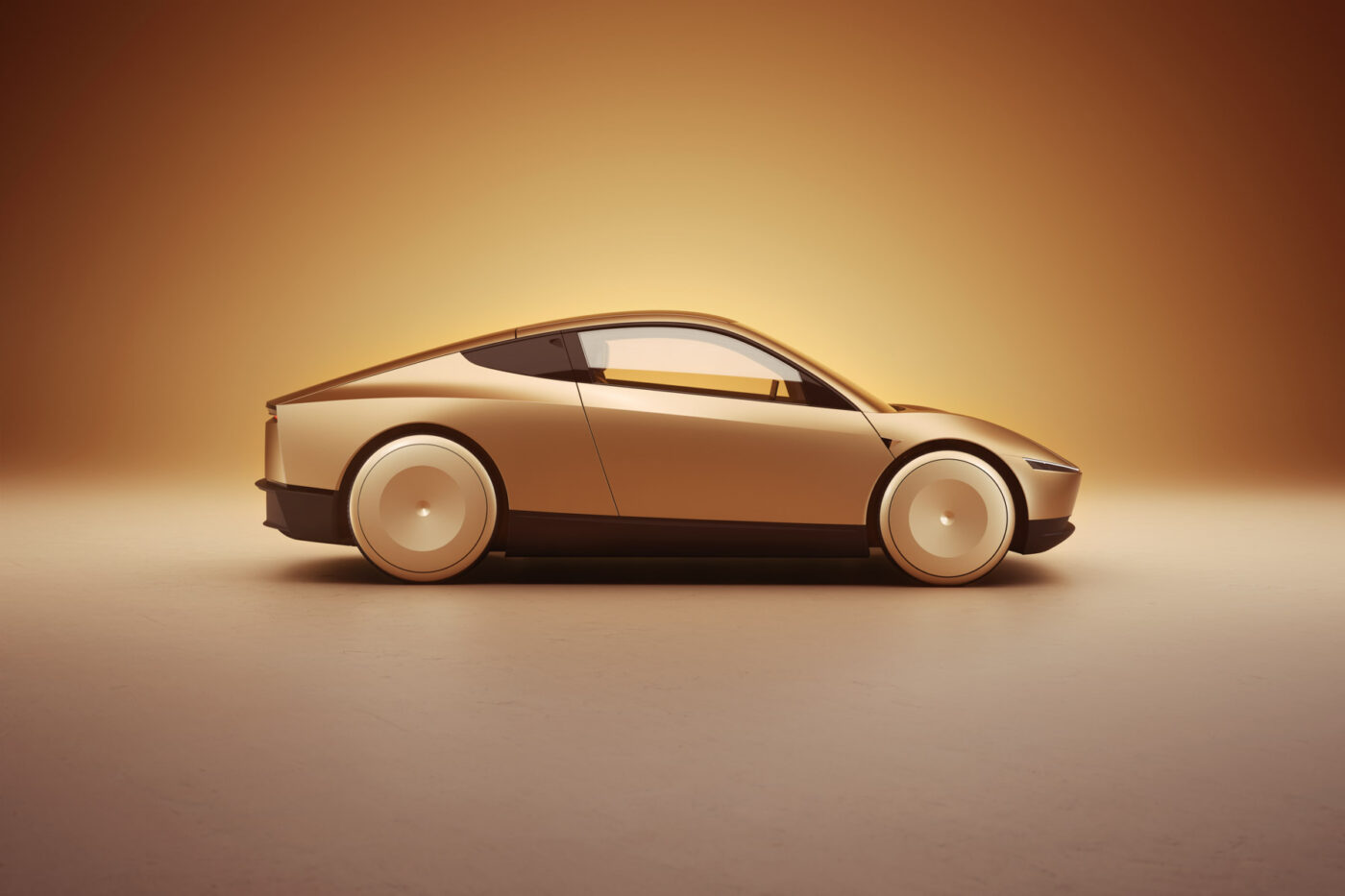





Unlike the Model 3, the Cybercab is only a two-seater. The hinged doors give access to a rather small interior, with a solid partition wall behind the two seats. Tesla has thus also eliminated a rear window. Nevertheless, there is a surprisingly large boot under the golden cover.
Tesla plans to start production in 2026 – at least according to Musk. However, he did add that he tends to be quite optimistic with timetables. So it remains to be seen whether the model will really be on the market in two years’ time. To take the most blatant example: Musk showed the second generation of the Tesla Roadster in November 2017 and announced production for 2020 – but the vehicle is still not available today.
Autonomous driving using cameras only
Until the actual premiere of the Cybercab (Musk also mentioned the year 2027), Tesla wants to further develop the autonomous driving system in the Model 3 and Model Y. The Model 3 and Model Y are expected to be able to drive autonomously in California and Texas by the end of next year, depending on regulatory approvals – after which the Cybertruck, Model S and Model X will also follow. The Cybercab thus appears to use a comparable system – i.e. purely camera-based. Elon Musk has rejected expensive lidar sensors several times in the past and is sticking to his guns for the Cybercab.
Tesla promises that the Cybercabs will also be particularly cheap to operate. At the event, Musk said that the Cybercab would cost around 20 cents per mile, whereas an average bus journey in the US would cost around one dollar per mile – in other words, five times as much. Of course, this cannot be verified at present.
In addition to the car-like Cybercab, Tesla has also presented the Robovan – an incredibly futuristic interpretation of a medium-sized electric bus. The presentation of the Cybercab as Tesla’s long-announced robotaxi was clearly at the centre of the ‘We, Robot’ event. Although Musk has already written about autonomous buses and shuttles in one of his master plans, a Telsa bus has since taken a back seat. InsideEVs also writes that the Robovan “was a surprise last-minute addition.”
The fact that there is currently no data on the drive system, autonomous driving system or release date also speaks in favour of the “last-minute addition,” and Tesla has so far remained silent on the price. There have already been plenty of autonomous minibus studies in the past, which can be used as a large-capacity taxi, goods transporter or for other purposes with interchangeable modules. Tesla also presented a kind of food truck as a rolling diner in addition to the passenger transporter.
So, let’s look at the known facts: Without a driver who needs a clear view of the road in front, the Robovan no longer has a windscreen. Golden elements and glass surfaces on the sides dominate its exterior. The wheels are located on the inside under the golden panelling, which gives the Robovan the appearance of a train hovering a few centimetres above the road. The sliding glass doors on the sides provide access to the interior or food truck sales stand.



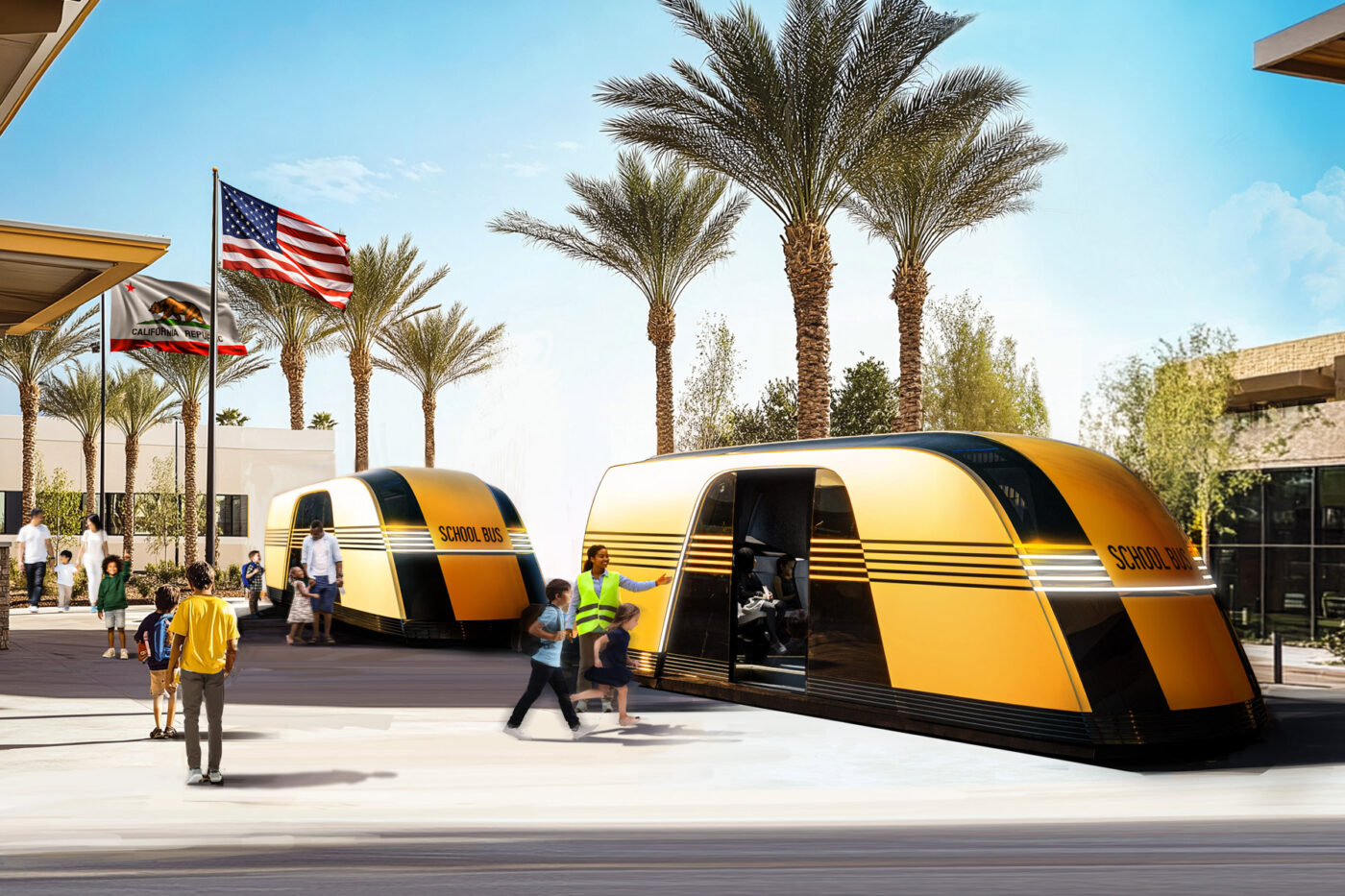






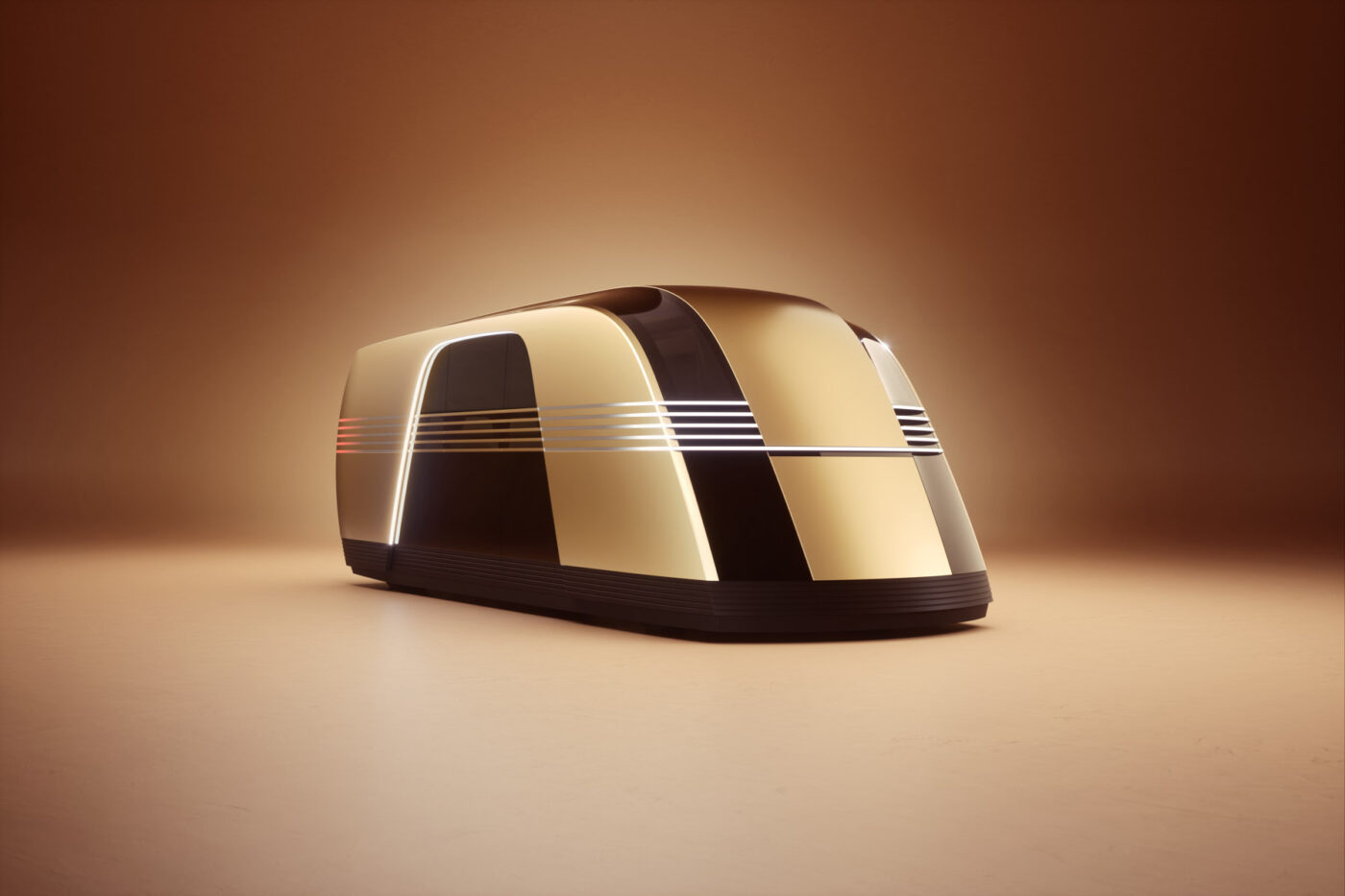



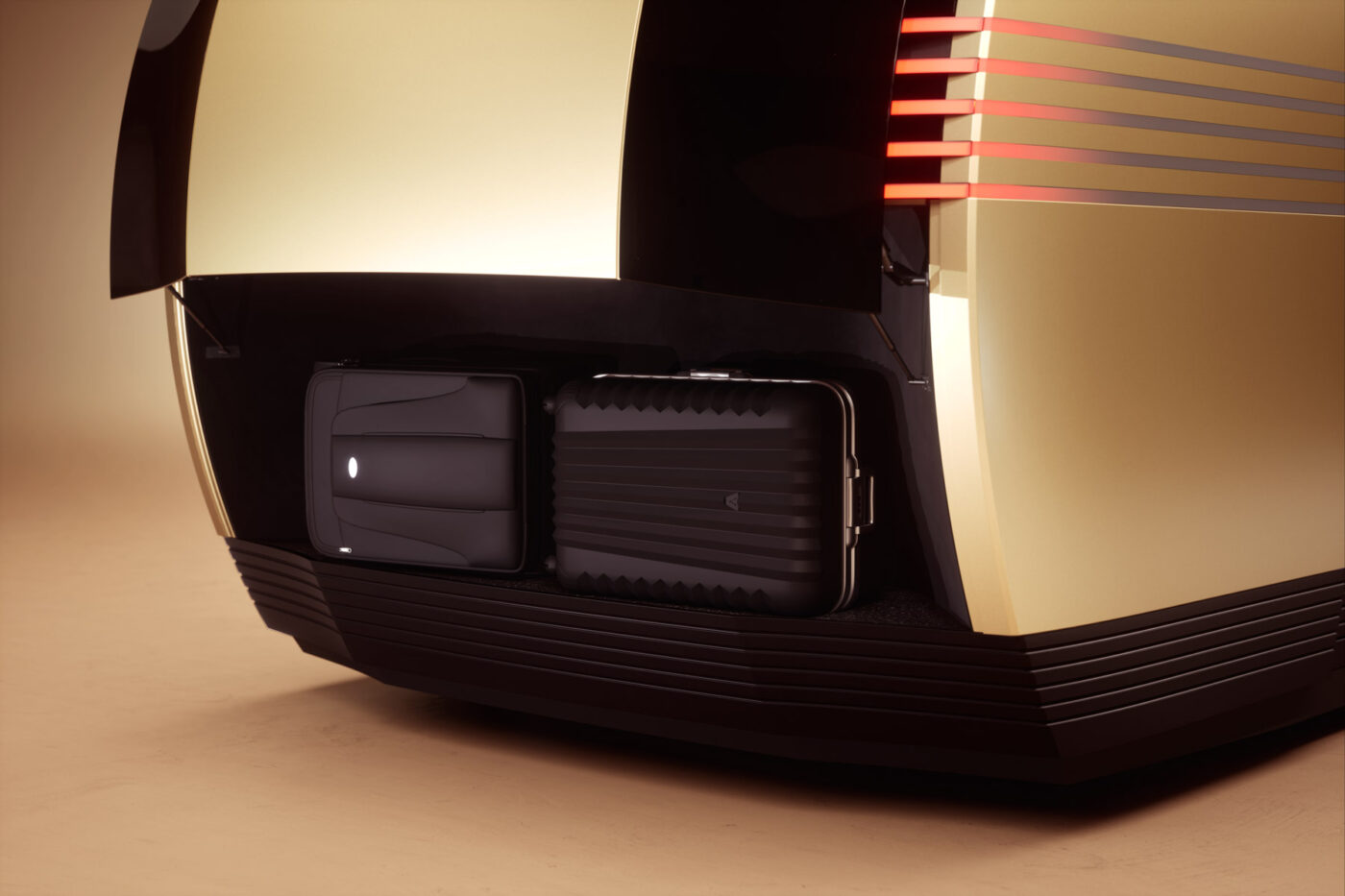


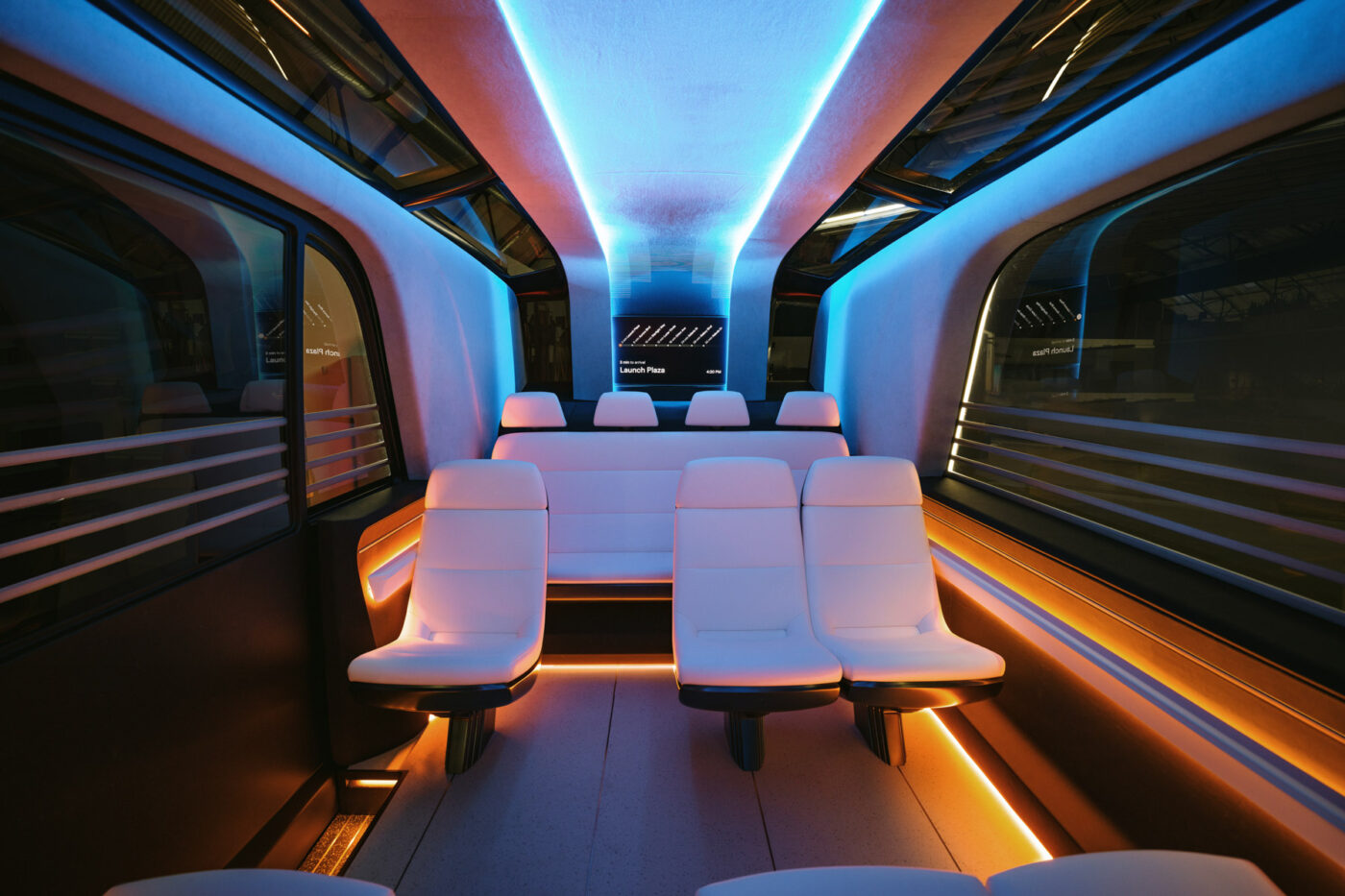



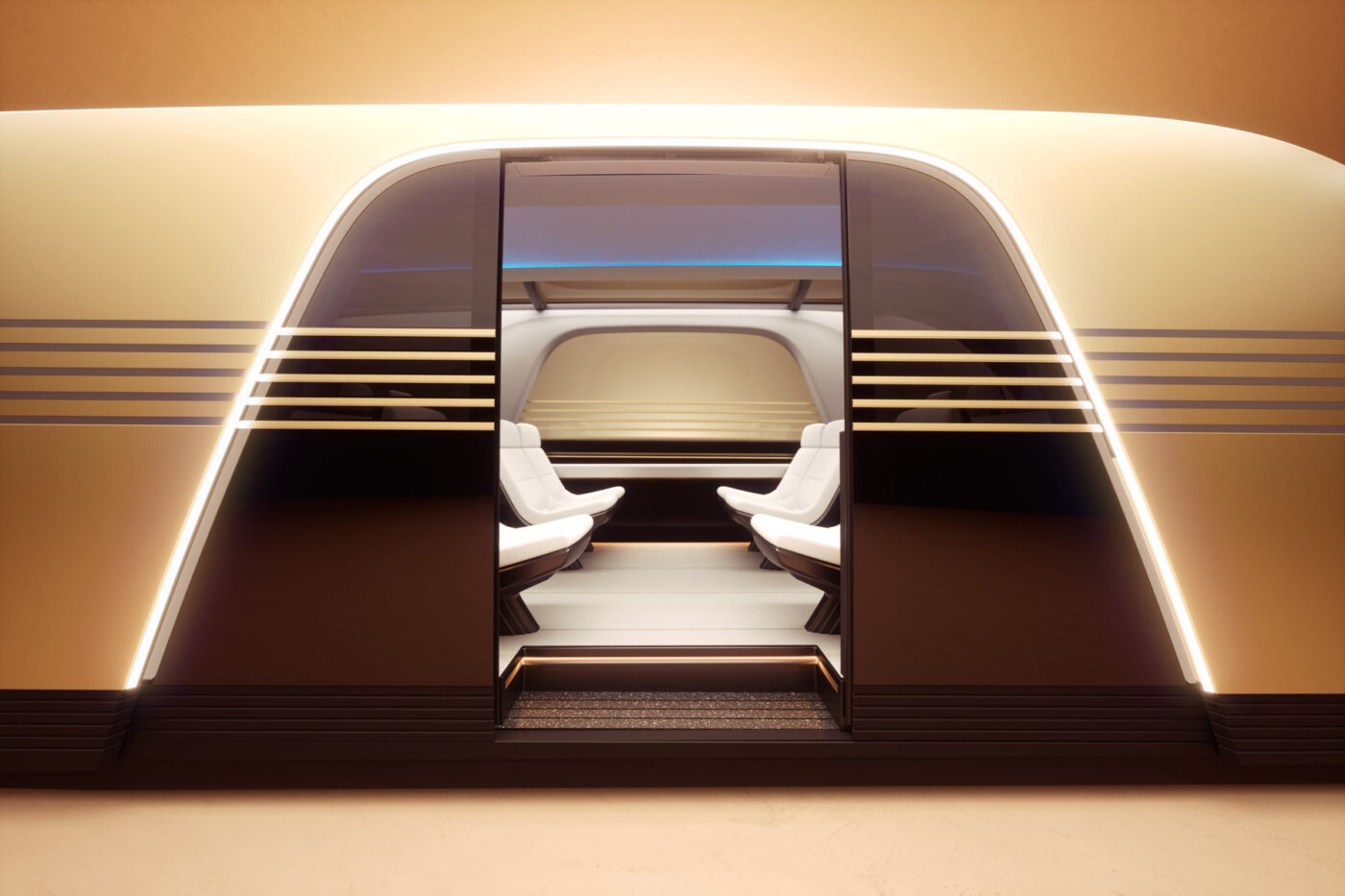





Although the premiere date is not yet known, Musk indicates that the vehicle is coming and will look like it. “One of the things that we want to do, and you’ve seen this with the Cybertruck, is we want to change the look of the roads,” Musk said of the Robovan. “The future should look like the future.”
What is almost more surprising about the double premiere than the design of the new Teslas is the massive criticism voiced in the US media immediately after the event. InsideEVs emphasises that Tesla failed to meet the announced market launch date and the promised base prices: “The Cybertruck was supposed to cost under $50,000 but now starts at $80,000.”
Electrek also criticises Tesla for promising autonomous driving for many years. “The only data available shows that Tesla needs a roughly 500-100x improvement in miles between disengagement before it can make this a reality, and it only was able to do a ~2x improvement so far this year,” it says.
Numerous experts have criticised the reliance on cameras alone for autonomous driving. Waymo also uses radar and lidar systems but can already record 100,000 autonomous journeys per week in four US cities.
One Electrek reader is annoyed that the Cybercab only has two seats (and a large boot): “They couldn’t make it seat at least 4? Vehicle takes up as much room on the road as a regular car and it only seats two… seems like a massive fail to me.”
insideevs.com, electrek.co (Cybercab), insideevs.com, electrek.co, theverge.com (Robovan)




2 Comments